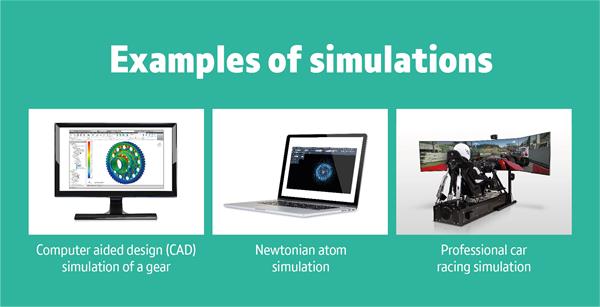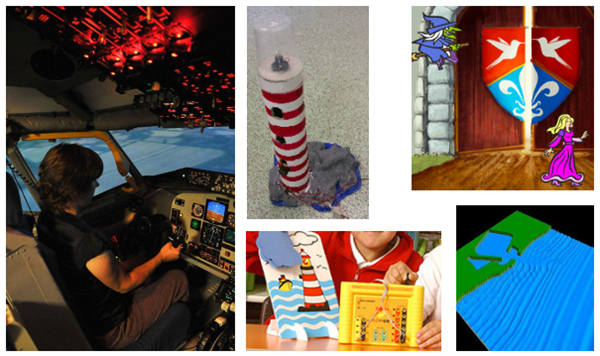What is simulation?
Simulation is modelling a real-world or imaginary situation. Simulations can represent physical or life scenarios, such as the growth of a population or the operation of an aircraft. A simulation can be used to explore a scenario – this is modelling typified by asking the “What if…?” question. Simulations can be very complex, such as a military aircraft simulator, or they can be very simple, such as a model of a lighthouse. Simulations can be fantasy worlds, such as a Scratch game, or models of the real world, such as used in the research of waves and tornadoes.

Simulations draw upon the principle of abstraction, considering key information and disregarding unnecessary detail. Simulations are not always constrained to computer systems and screens. Plastic mannequins are used by medics to practise a range of procedures. A traffic-light simulator might take the form of a set of physical lights, an onscreen image or a combination of the two. Simulations are often interactive and require the user to change aspects of the scenario; these aspects are variables. A flight simulator has very high fidelity – that is, it appears and behaves very much like the real thing, enabled by specialised software and systems and the gathering and generating of large amounts of accurate data.
Why are simulations important?
Simulations allow us to depict and study a range of scenarios which would otherwise be very difficult or impossible to stage due to such factors as:
- prohibitive expense;
- very short durations;
- very long durations;
- very small scales;
- very large scales;
- dangers or high impacts;
- being fictitious, theoretical, rare or unlikely.
For example, rather than building many different skyscrapers and observing the impact of earthquakes on each of them, over however many years that might take, we can instead use simulations of how different building designs withstand earthquakes, to work out the best. Computer simulations are an integral part of computer-based training systems and computer-aided design (CAD). Before making something for real, designers can develop ideas using a virtual version. Computer-aided manufacture can work on their digital designs, be it on a small scale (e.g. 3D printing) or a much larger one (e.g. an assembly line).

From simple to complex, real world to fantasy, simulations are used across a wide range of scenarios. Included are images by Senior Airman Jerilyn Quintanilla (United States European Command official website), public domain via Wikimedia Commons; and by the Coastal & Hydraulics Laboratory, US Army Engineer Research and Development Center, public domain via Wikimedia Commons.
The fidelity of aircraft simulators, combined with the seriousness with which exercises are undertaken, means that pilots can require emotional debriefing and support when they make mistakes. Sometimes, very large-scale, practical scenarios are orchestrated to explore the ramifications. These endeavours can cross international boundaries and involve many organisations rehearsing their responses to such phenomena as earthquakes, epidemics, war and terrorist attacks.